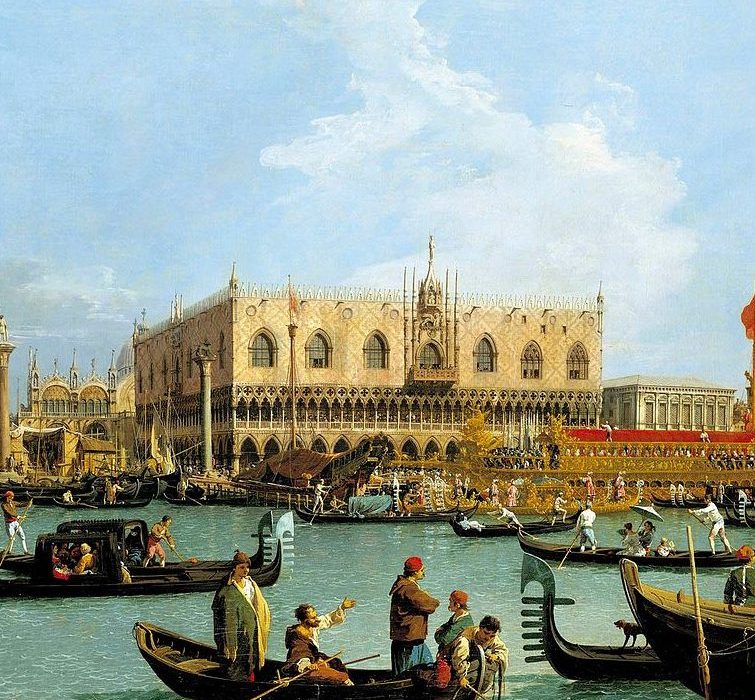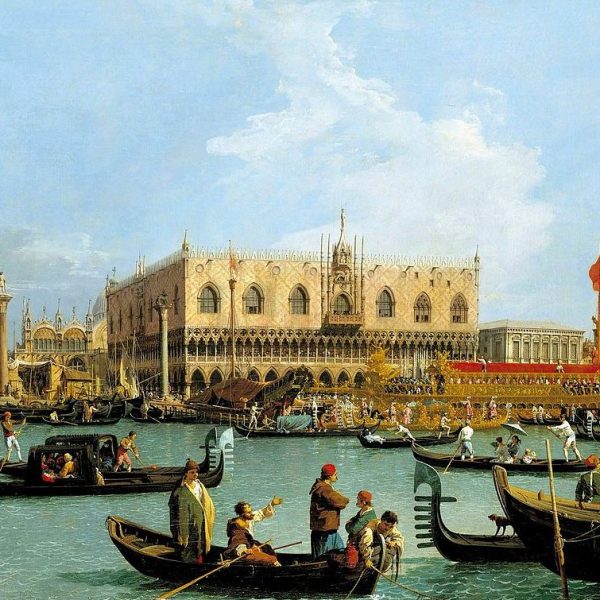Where better to spend your summer then Venice? Especially on an AHA summer course right? Well, luckily, you can catch a glimpse of this magical city in London this summer. The Royal Collection’s summer blockbuster this year is ‘Canaletto and the Art of Venice‘. But before you go and marvel at his paintings, we thought you might want a little refresher on who Canaletto, master painter of Venice, really was.
Giovanni Antonio Canal, known as Canaletto, was the supreme master of vedute, the painted or drawn views which reached the peak of their popularity in the eighteenth century. Born to a family of theatrical scene-painters, Canaletto depicted his native Venice as an atmospheric backdrop to a colourful cast of merchants, ambassadors and seafarers, and his portraits of the great city, La Serenissima, have evoked its charm for over two hundred years.
And if the barge looks familiar …
… that’s because we’re still using them. This one will started the Lord Mayor’s Show in 2016 by carrying the new Lord Mayor from Westminster to St Katherine’s dock.
Little is known of Canaletto’s early apprenticeship, although by 1720 he was entered as a member of the Venetian painter’s guild; and by this time he had already visited Rome. From the first documented commission, four views for Stefano Conti of Lucca, the artist’s pristine treatment of the architecture and detail and his strong contrasts of light and shade were in evidence. His work was especially prized by foreign visitors on the Grand Tour (the original, nothing to do with Jeremy Clarkson) – around the centres of classical and Renaissance civilisation – who ordered paintings as souvenirs of their travels. Prominent among these patrons were member of the English aristocracy, and among others Canaletto collaborated with the enterprising Owen McSwiney, who secured the interest of the Duke of Richmond, and the collector and agent Joseph Smith.
Canaletto paid an extended visit to England between 1746 and 1756, where he produced compelling views of the Thames and its skyline, and capriccios or architectural fantasies. Surprisingly he found it difficult to secure an equivalent reputation in England, where it was even alleged that he was “not the veritable Canalleti (sic) of Venice”. For an unusual but fascinating view of his English period read this recent abstract “Canaletto’s Colours” from British Art Studies. To counter these accusations the artist invited doubters to inspect his painting of St. James’s Park for reassurance. Canaletto’s sojourn abroad eventually cast its influence on English topographical painters, and many private collection still hold examples of this work.
Canaletto’s paintings are a byword for clarity and realism, achieved in part by his occasional use of the camera obscura device, and in part by his brilliant shorthand delineation of figures. Sadly, when he died in 1768 he left almost nothing; twenty-eight unsold paintings, a single bed, two bed covers and, as the executor of his will described them, “some old cloths.” In contrast, the record price paid at auction for a Canaletto is £18.6 million for “View of the Grand Canal from Palazzo Balbi to the Rialto”, set at Sotheby’s in London in July 2005.
So you you could get yourself down to the Queen’s Gallery to have a wander through the canals of Venice or you could join us as we head there this summer on our Northern Summer Course. Difficult choice… but there’s nothing like the real thing!
***
Our feature image is Canaletto’s ‘The Return of the Bucentaur to the Molo on Ascension Day (1730)’. Thanks to the Google Cultural Institute, you can see it in very high resolution – click here to have a look!





